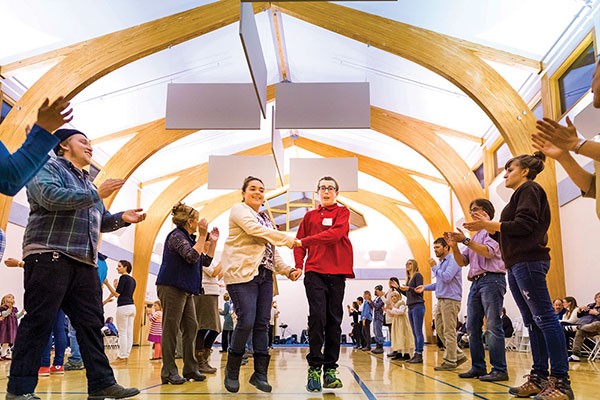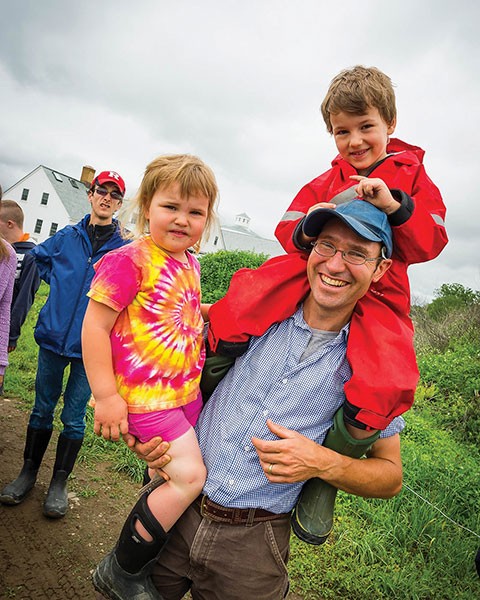When Carol Fernandez's son, Alex, was in his late teens, she could hear the clock ticking. It was time to figure something out. Alex has autism, and while the Individuals with Disabilities Education Act ensures public education services for people like him, those would end when he turned 22. "He graduated from high school on time, but he needed more services," says Fernandez, an attorney who raised Alex and two daughters with her husband, a professor, in suburban Boston. "He wasn't ready to go out into the world. When they're in that 18 to 22 bracket, you start to wonder, what are they going to do? Where do they go? You're staring at this precipice, and you're left to untangle an unholy mishmash of competing agencies. It's very complicated to figure it out."
Yet while his parents fretted, Alex seemed to know exactly what the plan would be all along. From as far back as eight or nine years old, he had started talking about living on a farm. "He would say, 'My mom and dad are going to buy a farm, and I'm going to live on it.' My husband and I are both from New York City, and it was like, no way! That is not happening," laughs Fernandez. But Alex stuck with the story so consistently that his parents couldn't ignore it. A few years ago, Fernandez googled "farms and autism," and to her surprise she discovered a world of options. One of them blew her mind: a 500-acre biodynamic "farm village" in Hudson called Triform Camphill Community, where young adults with various developmental disabilities live and work side by side with resident families and a corps of volunteers. Now 22, Alex is moving into his third year at Triform, and his days are filled with working in the vegetable gardens, taking classes in the pottery and weaving studios, helping to cook meals, and hanging with his friends. Even when it's not his job, sometimes he will wake up early to milk the cows—just because he can.
Where Lives of Potential Take Root
Tucked into the bovine-dotted fields of Columbia County, where driving directions might include "turn right after the round white barn," Triform is a pastoral vision painted in the spirit of Rudolf Steiner, one of the community's main influences. The early-20th-century Austrian philosopher and social reformer had many devotees, and one of them was fellow Austrian Karl König, who translated Steiner's anthroposophical teachings into a way of living for people with special needs. König's "Camphill Movement" of the 1940s planted the seed for an international assortment of intentional communities; today, there are over 100 Camphills worldwide, 10 of them in the United States—all independently operated but united in their mission to offer lives of purpose, connection, and meaning to everyone who resides there, abled or disabled.
Triform has upheld the Camphill model since the early 1980s, when founders Hans and Sophia Kunz developed the Hudson farm as a place to balance vocational work, community and life-sharing, and artistic and cultural experiences. "It's a really well-rounded approach to taking in the whole person's needs in the social, therapeutic, and work realms," says Triform's current director, Meg Henderson. Today Triform is home to about 100 people—a fully integrated mix of families, long- and short-term volunteers, as well as 35 resident "students" with mild to moderate developmental disabilities such as Down syndrome, cerebral palsy, and autism. (Triform also hosts 11 day students through Solaris, a Camphill urban outpost in downtown Hudson.) All are involved in some way in the rhythms of the farm, in keeping with the cycles of nature. Students train in various vocational areas, from animal husbandry to working in the on-site bakery; among the artistic offerings are eurhythmy (expressive movement), painting, and drama. Families, volunteers, and students all live together in a collection of houses scattered about the property, making home economics a built-in program as everyone plays a role in running a household.
As a self-supporting community that produces most of its own food and lives communally (no one at Triform receives a salary), Triform values the contributions of all its members—yet it places particular emphasis on supporting the growth of a special-needs population that is entering the new terrain of young adulthood. "The best age for coming to Triform, our most populous age, is around 21 to 25, but we do have individuals in their 40s and 50s [who have stayed on], and also some who start at 18," says Henderson. "The hallmark of everyone who comes here is that they have exactly the same aspirations and dreams as their siblings. They want to move on in life; they want to experience a setting where they can grow up and be independent, and explore being an adult. There's very little opportunity for that for developmentally disabled youth."













